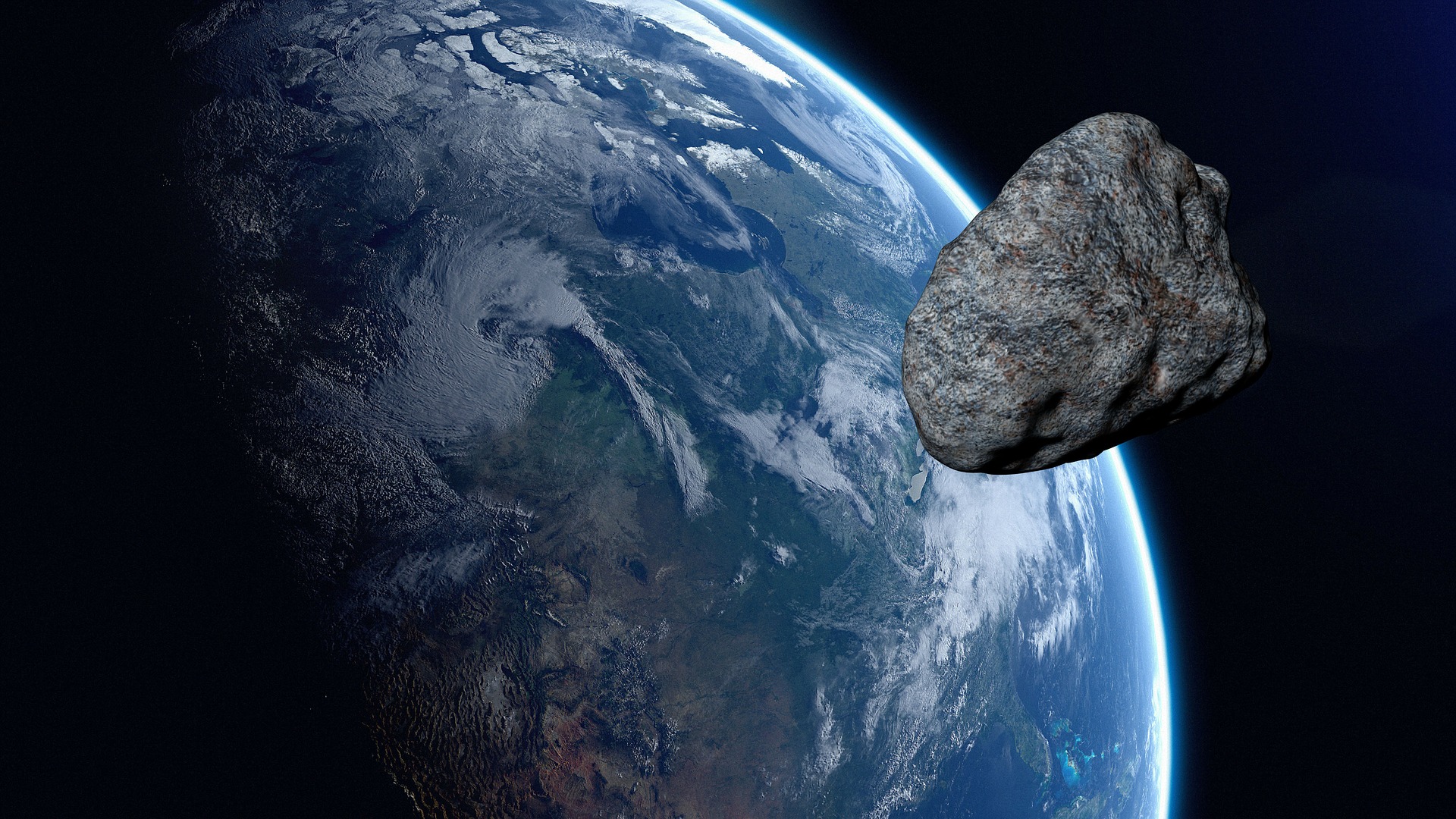A small asteroid's orbit is changed forever after super close Earth flyby
This time, the space rock missed Earth by a few thousand miles.

A Hungarian astronomer who had discovered a small asteroid just hours before it hit Earth earlier this month nearly scored a second lucky strike spotting another space rock that appeared on a collision course with the planet. This time, however, the body missed Earth by just a few thousand miles.
Krisztián Sárneczky, an astronomer at the Konkoly Observatory near Budapest in Hungary, spotted the asteroid, about 6.6 to 14 feet (2 to 4 meters) in size, according to EarthSky, on Thursday (March 25) night, as it was hurtling toward Earth. Since then named 2022 FD1, the asteroid passed through the planet's shadow above the Pacific Ocean a few hours later, on Friday (March 26) at 3:10 a.m. EDT (0810 GMT).
About an hour later, the rock made its closest approach to the planet, zooming past at a distance of about 5,300 miles (8,500 kilometers). For comparison, U.S. GPS navigation satellites orbit at an altitude of 12,500 miles (20,200 km). The International Space Station orbits much lower, at about 250 miles (400 km).
Related: Just how many threatening asteroids are there? It's complicated.
Significant change of the inclination of my new close approacher #2022FD1 (aka #Sar2594) during its flyby: i=9,4 deg -> 4,5 deg. (data: @AdrienCoffinet, graphics: @MinorPlanetCtr) pic.twitter.com/hQeKqG935dMarch 25, 2022
The close proximity of Earth altered the asteroid's orbit, Sárneczky said on Twitter.
"Significant change of the inclination of my new close approacher #2022FD1 (aka #Sar2594) during its flyby: i=9,4 deg -> 4,5 deg," the astronomer tweeted on Friday (March 25).
Sárneczky made headlines earlier this month when he spotted the asteroid 2022 EB5 just a few hours before that space rock burned up in Earth's atmosphere somewhere between Iceland and Norway. That asteroid, about 10 feet (3 meters) wide, was only the fifth asteroid ever to be discovered prior to impacting Earth, according to NASA.
Get the Space.com Newsletter
Breaking space news, the latest updates on rocket launches, skywatching events and more!
The other four asteroids that have been spotted before impact include 2014 AA, 2018 LA, 2008 TV2 and 2019 MO, according to Earthsky.org.
The discovery highlights the potential risks of asteroid impacts to our planet. Statistically, most space rocks Earth encounters are small enough to burn up in the planet's atmosphere, triggering only awe-inspiring fireball displays. But sometimes, even quite large rocks make it to the planet's surface undetected. In 2013, an asteroid the size of a six-story building exploded above the Russian town of Chelyabinsk, causing a major shock wave that injured 1,200 people.
Follow Tereza Pultarova on Twitter @TerezaPultarova. Follow us on Twitter @Spacedotcom and on Facebook.
Join our Space Forums to keep talking space on the latest missions, night sky and more! And if you have a news tip, correction or comment, let us know at: community@space.com.

Tereza is a London-based science and technology journalist, aspiring fiction writer and amateur gymnast. Originally from Prague, the Czech Republic, she spent the first seven years of her career working as a reporter, script-writer and presenter for various TV programmes of the Czech Public Service Television. She later took a career break to pursue further education and added a Master's in Science from the International Space University, France, to her Bachelor's in Journalism and Master's in Cultural Anthropology from Prague's Charles University. She worked as a reporter at the Engineering and Technology magazine, freelanced for a range of publications including Live Science, Space.com, Professional Engineering, Via Satellite and Space News and served as a maternity cover science editor at the European Space Agency.









